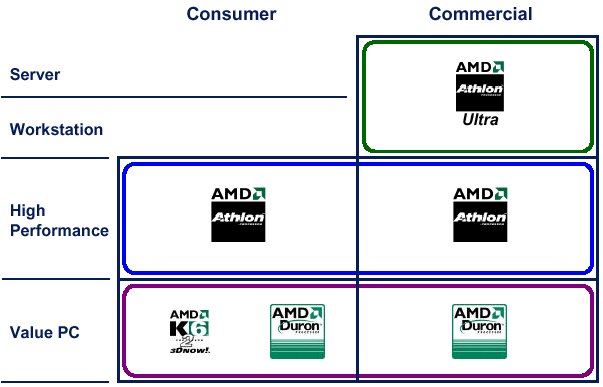Conclusion
We came to this conclusion the first time we took a look at the Celeron and AMD is reiterating the statement with their Duron: value doesn't have to mean slow.
At 700MHz the Duron performs, across the board, between an Athlon 600 and Athlon 700. It is safe to say that a Duron 700 performs much like an Athlon 650, and at a lower cost to boot. On the Intel side of things, the Duron 700 is performing between a Pentium III 600 and a Pentium III 700 as well. But remember, neither the Athlon nor the Pentium III are the intended competitors of the Duron, even if they were the Duron wins in terms of price to performance ratio.
The Celeron is where the Duron likes to sink its teeth into; Intel's value processor that helped to kill the K6-2 and K6-III sales is now being held at the mercy of AMD's latest creation. At any default clock speed, the Celeron, even with its SSE instructions can't compare to the Duron. Chances are that the "slowest" Duron running at 600MHz would have its way with Celerons clocked at higher speeds as well. This is mainly because of the fact that the Celeron's performance is limited by its 66MHz FSB and 66MHz memory bus.
A Celeron 566 overclocked to 850MHz (100MHz FSB) begins to restore competition to the value market as it can begin to measure up to the performance of the lower clocked Duron 700. At the beginning of the year Intel told us that they didn't move the Celeron to a 100MHz FSB because there was no reason to, well AMD just gave Intel 5 letters that spell out exactly why the Celeron needs a 100MHz FSB. Don't be surprised if you do see a 100MHz FSB Celeron in the future (not in the near future though), we already know that the Celeron can run on a 100MHz FSB, it's just up to Intel to decide when they should make the move. Even if Intel is to introduce a Celeron that runs off of a 100MHz FSB, clock for clock, as we have already proven, the Duron is the faster part.
Since the Duron and Thunderbird clock speeds don't overlap, you don't have to decide between one or the other, it basically comes down to what level of performance you are looking for. If you're looking for the performance offered by an 800MHz Thunderbird, the choice is simple, since there is no 800MHz Duron. However if you'd rather save your money, you can simply go with a 600, 650 or 700MHz Duron now and upgrade to a Thunderbird later on since all Socket-A motherboards support both processors. Having a flexible upgrade path is never a bad thing.
AMD is sitting pretty right now with the Duron covering the value market and the Thunderbird taking care of the performance desktop, the only remaining piece of the puzzle is the block that fills the "Athlon Ultra" section of the AMD processor spectrum.
Mustang, with patience we wait for thee.

| |










0 Comments
View All Comments